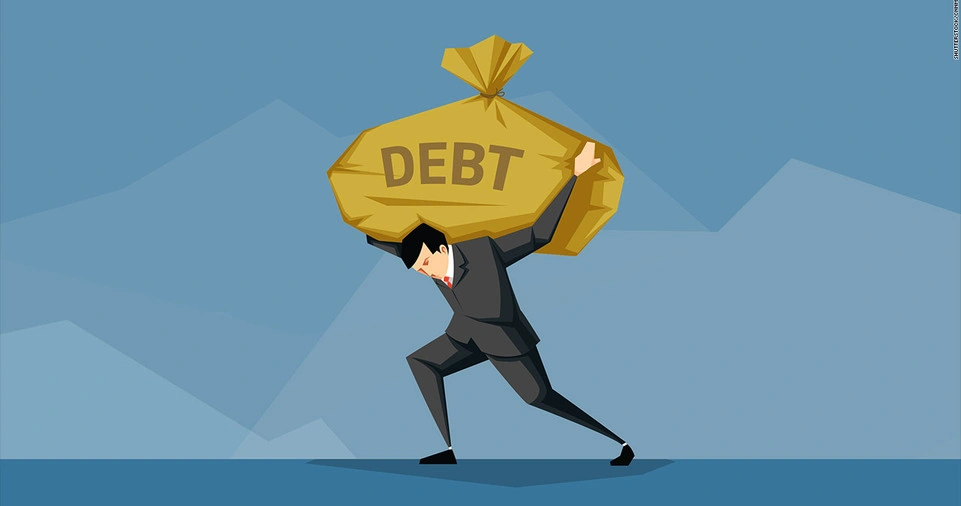Debt can feel like a never-ending burden, restricting financial growth and creating stress in daily life.
Whether it’s credit card debt, student loans, car loans, or medical bills, being in debt can make financial freedom seem unattainable.
However, with the right approach, strategies, and mindset, you can eliminate debt and set yourself on a path toward financial stability.
This guide will take you through the most effective ways to get out of debt, covering budgeting, debt repayment strategies, income growth, and financial habits that will help you achieve long-term wealth.
By implementing these methods, you’ll not only become debt-free but also create a sustainable financial future.
Let’s dive in and discover how you can regain control of your money and enjoy a stress-free financial life.
Understanding Your Financial Situation
Assessing Your Debts
The first step in getting out of debt is understanding exactly where you stand financially.
Many people avoid looking at their debts because it feels overwhelming, but facing reality is necessary to make improvements.
Start by listing all your debts, including:
- Credit cards
- Personal loans
- Student loans
- Auto loans
- Medical bills
- Any other outstanding loans or liabilities
For each debt, note the total amount owed, the interest rate, the minimum monthly payment, and the due date.
This information will give you a clear picture of how much you owe and what needs to be prioritized.
Analyzing Your Income and Expenses
Once you know your total debt, the next step is evaluating your income and expenses.
Understanding your cash flow will help you determine how much money you can allocate toward debt repayment each month.
- Track Your Income: Include all sources of income, including salary, freelance work, investments, or any side hustles.
- Review Your Expenses: Categorize your expenses into essentials (rent, groceries, utilities) and non-essentials (eating out, entertainment, subscriptions).
- Calculate Your Debt-to-Income Ratio: This ratio helps assess your financial health. Divide your total monthly debt payments by your gross monthly income. A lower ratio indicates better financial stability.
Once you’ve assessed your financial situation, you can create an actionable plan to tackle debt effectively.
Creating a Realistic Budget
Why Budgeting Is Essential
Budgeting is one of the most powerful tools to help you control your money and eliminate debt.
Without a clear budget, it’s easy to overspend and make little progress toward financial freedom.
How to Create an Effective Budget
- List Your Income: Identify all sources of income.
- Categorize Your Expenses: Break expenses into fixed costs (rent, utilities) and variable costs (entertainment, shopping).
- Set Spending Limits: Determine how much you can afford to spend on each category.
- Allocate Funds for Debt Repayment: Dedicate a portion of your budget toward clearing debts each month.
- Track Your Progress: Use budgeting apps like Mint, YNAB, or Excel spreadsheets to monitor expenses and adjust as needed.
50/30/20 Budgeting Rule
A popular budgeting strategy is the 50/30/20 rule:
- 50% for Needs: Essentials like rent, groceries, and transportation.
- 30% for Wants: Dining out, entertainment, shopping.
- 20% for Debt Repayment & Savings: Paying off debt and building an emergency fund.
Sticking to a budget ensures you prioritize debt repayment while still managing necessary expenses.
Building an Emergency Fund

Why You Need an Emergency Fund
An emergency fund prevents unexpected expenses from pushing you further into debt.
Without savings, a car repair, medical emergency, or job loss can lead to additional borrowing, worsening your financial situation.
How Much Should You Save?
- Start with a small goal of $500 to $1,000.
- Gradually build up to three to six months’ worth of living expenses.
- Store the funds in a high-yield savings account for easy access.
Having an emergency fund provides financial security and prevents reliance on credit cards for urgent expenses.
ALSO READ: How to Market Your Business on Social Media Effectively
Choosing a Debt Repayment Strategy
Snowball Method
The Debt Snowball Method focuses on paying off the smallest debts first, regardless of interest rates. This approach provides quick wins, keeping you motivated.
Steps to Follow:
- Make minimum payments on all debts.
- Allocate extra funds toward the smallest debt.
- Once it’s paid off, move to the next smallest debt.
- Repeat until all debts are cleared.
Avalanche Method
The Debt Avalanche Method targets the debt with the highest interest rate first, saving you money in the long run.
Steps to Follow:
- Pay minimum payments on all debts.
- Use extra funds to pay off the highest-interest debt first.
- Once cleared, focus on the next highest-interest debt.
- Continue until all debts are paid.
Both methods are effective; choose one based on your preference and financial situation.
Reducing Expenses & Increasing Income
Ways to Cut Expenses
- Cancel unnecessary subscriptions and memberships.
- Cook at home instead of eating out.
- Buy generic brands instead of name brands.
- Use public transportation to save on gas and car maintenance.
- Negotiate bills, such as internet and insurance rates.
Ways to Increase Income
- Take on a part-time job or side hustle (freelancing, tutoring, rideshare driving).
- Sell unused items online.
- Ask for a raise at your current job.
- Invest in skills that increase earning potential.
Increasing your income while cutting expenses allows you to accelerate debt repayment and build wealth faster.
Avoiding New Debt
- Stop using credit cards unless necessary.
- Avoid unnecessary loans.
- Pay with cash or debit instead of credit.
- Delay large purchases until financially stable.
Investing for Financial Freedom
Once debt-free, shift your focus to investing for long-term financial stability.
Best Investment Options
- Retirement Accounts (401(k), IRA): Invest for long-term growth.
- Stocks and ETFs: Build wealth through market investments.
- Real Estate: Generate passive income through rental properties.
- Side Businesses: Diversify income streams.
Investing ensures your financial independence and secures your future.
Conclusion
Achieving financial freedom starts with eliminating debt.
By assessing your financial situation, budgeting effectively, using debt repayment strategies, and increasing your income, you can successfully get out of debt.
Avoiding new debt and investing wisely will help you build long-term wealth and financial security.
Stay disciplined, follow these strategies, and you’ll soon enjoy a life free of financial stress.
Start your journey today and take control of your financial future!







